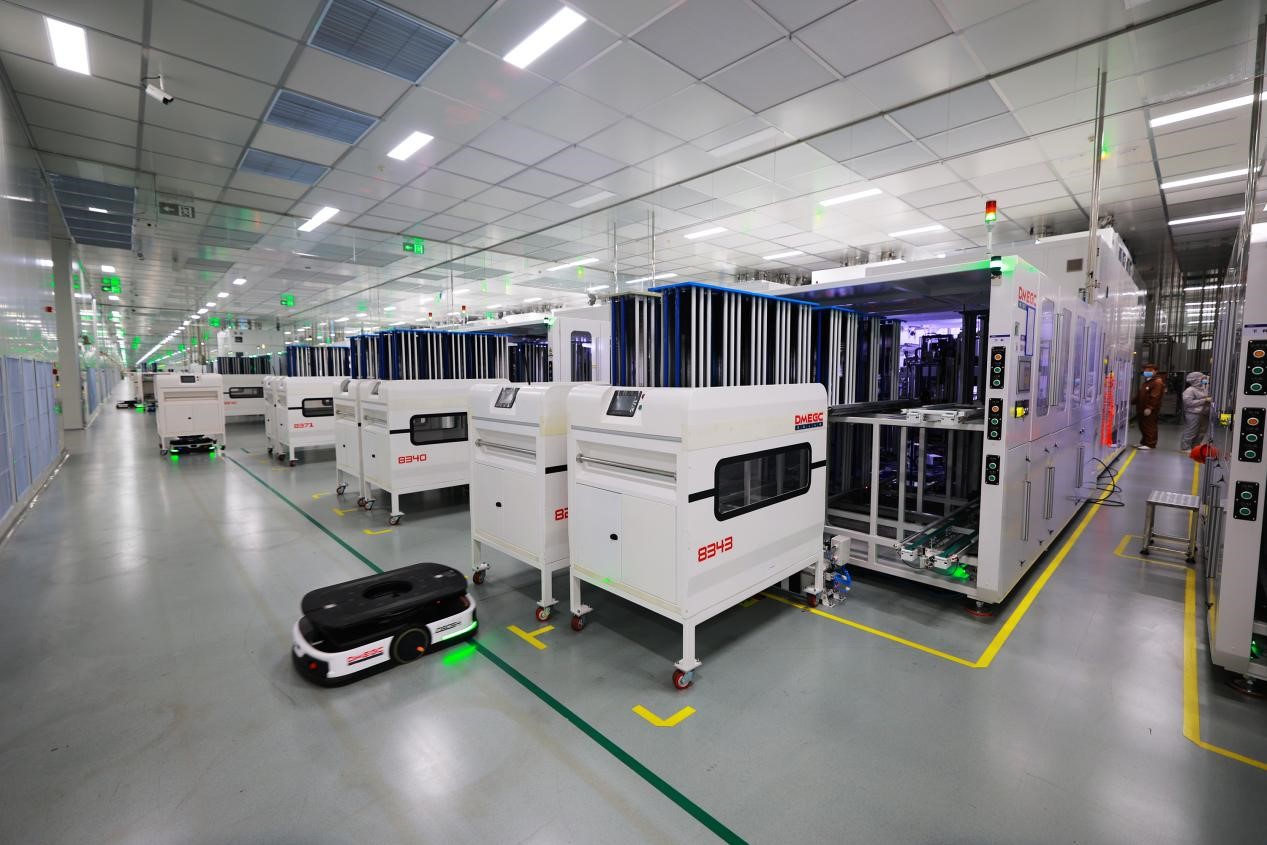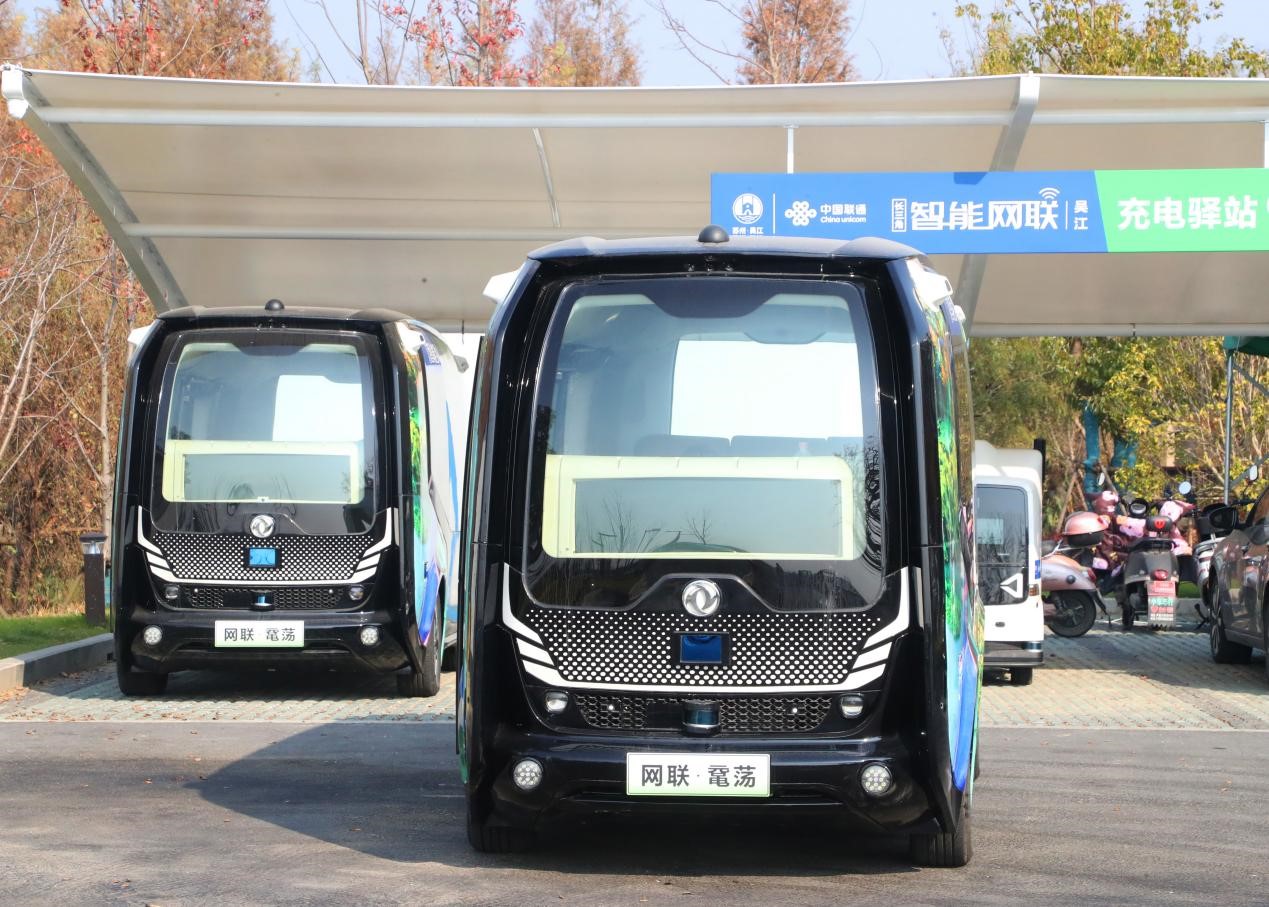5G technology sees application in various industries in China
Despite living at an average altitude of 5,373 meters, residents of Pumaqangtang township in Nagarze county, Shannan, southwest China's Xizang autonomous region, can access live sports streaming on their mobile phones.
With the help of 5G technology, surgeons in Beijing can control robotic arms nearly 3,000 kilometers away in south China's Hainan province, and perform challenging operations for patients with nearly zero network delay.

Automated guided vehicles transport battery packs in a workshop of a new energy company in Yibin, southwest China's Sichuan province. (People's Daily Online/Lan Feng)
These scenarios couldn't have been realized without China's efforts to promote 5G technology. As of the end of 2023, China had built over 3.37 million 5G base stations and the number of 5G mobile phone users had reached 805 million. China is home to the world's largest optical fiber and mobile broadband networks, which cover all prefecture-level cities and counties.
The applications of 5G technology have seeped into all industries, bringing profound impacts to people's work and life.
According to an official of China's Ministry of Industry and Information Technology (MIIT), over 90 percent of the existing 5G base stations across China are co-constructed and shared by telecommunication carriers, and 23.02 million ports are capable of providing gigabit network services.
The official said China has launched seven batches of pilot programs of universal telecommunication service, offering support to 130,000 administrative villages in building optical fiber networks and helping the construction of 60,000 4G base stations in rural areas. This has enabled the country's vast countryside to enjoy high-speed and stable network services.
The network infrastructure is becoming increasingly developed, and new breakthroughs are being continuously achieved in key 5G technologies. In recent years, China's 5G technology sector has consistently strengthened its innovation capabilities in areas such as technical standards, network equipment, and terminal devices.
China owns more than 42 percent of the standard essential patents for 5G technology, staying at the top of the world rankings. Mobile Internet of Things (IoT) terminal users account for 57.5 percent of the total number of mobile network terminal connections, which has laid a solid foundation for universal interconnectivity.

Two 5G-enabled autopilot tour buses are on trial operation in Wujiang district, Suzhou, east China's Jiangsu province. (People's Daily Online/Wang Jianzhong)
Lightweight 5G core networks and customized base stations have achieved commercial deployment. A batch of new terminals such as 5G industrial gateways and inspection robots have been successfully developed.
China has launched the world's first smartphone with satellite communication, and further enhanced its innovation capabilities in areas like 6G, quantum communication, and artificial intelligence.
In the general assembly workshop of a smart factory of GAC Aion, a Chinese electric vehicle manufacturer, an intelligent carrier transporting a vehicle body glided into a workstation. Two seven-axis robots on both sides of the workstation then sprang into action. What used to require multiple operators to finish was automatically completed in just 53 seconds. What's more important, key parameters were simultaneously uploaded to an intelligent production system, enabling full-lifecycle traceability of the products.
This intelligent connected vehicle exactly mirrors the rapid integrated development of 5G and industrial internet in China.
"Benefiting from 5G-powered industrial internet, we not only have achieved a 98.5 percent first-pass yield and maximum capacity utilization of 160 percent, but also offer users over 100,000 personalized configuration combinations across more than 20 dimensions including intelligent driving, wheels, exteriors, and interiors," said Gu Huinan, general manager of GAC Aion.
At the end of last year, the smart factory of GAC Aion stood out from numerous new energy vehicle factories around the world and was listed as a Lighthouse Factory by the World Economic Forum, Gu added.

Technicians of the Zhangye branch of China Telecom test a 5G base station in Kangning village, Ganzhou district, Zhangye, northwest China's Gansu province. (People's Daily Online/Yang Yongwei)
In recent years, the 5G-powered industrial internet has expanded its application scenarios from production to the entire industrial chain, effectively promoting the transformation of the manufacturing industry towards high-end, intelligent, and green development.
Behind the increasingly diverse application scenarios is the continuous development of digital technology. Currently, 5G applications have been integrated into 71 out of the 97 categories of the national economy, with over 94,000 application cases and more than 29,000 5G industry virtual private networks. 5G applications have been widely promoted in industries such as manufacturing, mining, power, ports, and healthcare. Over 10,000 5G-powered industrial internet projects have been launched.
"The number of 5G mobile phone users continues to grow, and the consumption of 5G data is rapidly increasing, which has promoted the flourishing development of emerging businesses such as naked-eye 3D and cloud phones, effectively expanding the development space of the mobile communication market," said an official with the MIIT.
The integration of 5G and gigabit optical networks has been continuously expanding, driving China's digital economy to a new level of development. By the end of 2023, 5G network access traffic penetration accounted for 47 percent. According to estimates by a research institution, 5G is expected to help create an economic output of 1.86 trillion yuan ($257.31 billion) in 2023, a 29 percent increase compared to 2022.
"Information technology is deeply integrated into various industries, reshaping the industrial structure and accelerating the upgrading of business models. It has become an important driver for the development of new quality productive forces," said an MIIT official.
Photos
Related Stories
- MTC, Huawei conduct first official 5G trials in Namibia
- Huawei launches first 5G smart warehouse in Indonesia
- Interview: Ericsson "optimistic" about telecoms' future in China
- Chinese innovations ignite wow moments at world's leading mobile tech gala
- Mobile World Congress 2024 opens with focus on 5G, AI innovations
Copyright © 2024 People's Daily Online. All Rights Reserved.









